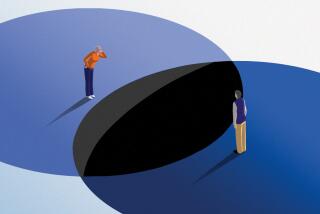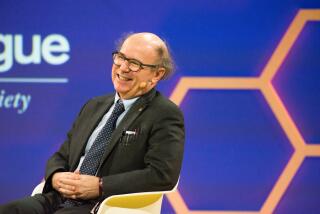BOOK REVIEW : Math: Calculating the Uncertain Future : SEARCHING FOR CERTAINTY: What Scientists Can Know About the Future, <i> by John L. Casti</i> , William Morrow and Co., $22.95, 416 pages
- Share via
Wouldn’t it be nice if we could predict the weather as far into the future as we liked? Or the behavior of stock market prices? Or the date of the outbreak of a war, or the adult appearance and behavior of a newborn baby?
Scientists are discovering mathematical rules governing phenomena once thought beyond our power to understand, let alone predict. And engineers are developing staggeringly powerful new computers that can use the new theories to forecast the future. But how accurate will those forecasts be?
That question guides the dazzling, demanding book, “Searching for Certainty: What Scientists Can Know About the Future.” In it, mathematician-author John L. Casti explores the new possibilities for making sound, scientific predictions over a wide range of phenomena in the daily world. He explains how the brute power of the latest supercomputers and classical rules of logic make these predictions, and he assesses just how far the computers’ results can be trusted.
What he finds is that some things are still as maddeningly hard to predict as they ever were. Not only that, he says, but our immense number-crunching power may show us, once and for all, that in trying to predict complex developments we are butting our heads against an immovable wall.
Casti sums up this idiosyncratic guide to contemporary applied mathematics with a paradox that suggests science may ultimately be chasing its tail: “If there was ever a compact description of . . . what it means to do science,” he writes, it would be “searching for lawful descriptions of natural and human phenomena.”
Over and against this true and unobjectionable statement he places a famously bleak pronouncement of the distinguished quantum physicist and cosmologist Archibald Wheeler: “The only law is that there is no law.”
The author contemplates this cosmic conundrum from an obscure post at Vienna’s Technical University, where he teaches applied mathematics. Apparently, he is homesick for the more visionary and intellectually hospitable people of Los Angeles. Casti earned his doctorate in mathematics at USC and worked for the RAND Corp. before emigrating to Europe.
“Who’d be a better judge,” he asks rhetorically, “of what does and doesn’t make the world shake than an Angeleno?”
The author of several mathematics textbooks, Casti first tried to shake the world with his 1989 book “Paradigms Lost: Images of Man in the Mirror of Science.” In that ambitious work he examined six Big Questions that drive research.
Examples: Is human behavior dictated primarily by the genes? (“Not proven.”) Does language capacity stem from a unique property of the human brain? (“Yes.”) Do intelligent beings exist outside our solar system? (“Yes, but we’ll never find them.”) He presents each question as if to a court of law, with a lengthy prosecution and defense, then a verdict--a short essay weighing the evidence and reaching a conclusion.
In the present “Searching for Certainty,” Casti addresses another set of questions, using another clever device, that of letter grades (with written justifications) to assess how well scientists can explain and predict the stock market, the weather, the outbreak of war, or the course of development of a human being. His grades range from B+ (weather prediction) to D+ (predicting the development of human beings). His grade point average for the predictability of the phenomena he examines (calculated by this reviewer) is C+.
As he does with his Big Questions in “Paradigms Lost,” Casti here gives a fair and sympathetic hearing to all the arguments surrounding each prediction problem. One of the strongest points of the book, in fact, is the author’s genuine receptivity to diverse, and often conflicting, ideas. He has a deep--some might say naive--belief in the power of logic to separate truth from falsehood. Like a good teacher, he never offers his own opinion until he has given everyone else a say.
But despite the attractive qualities of “Searching for Certainty,” the book staggers under its own intellectual baggage and ultimately collapses. Unlike the more accessible (and, it must be said, more interesting) “Paradigms Lost,” “Searching” is heavy with mathematical formulas, charts, graphs and tables.
Also, the reader cannot help but wonder about the purity of Casti’s data, which are gathered, after all, by a self-taught amateur from a wide variety of printed sources in the physical, biological and social sciences. The book contains no evidence that Casti actually discussed these matters with experts. Flawed data produce corrupt results, as reflected in the computer-literate scientist’s motto: “Garbage in, garbage out.”
Nevertheless, the book is a delightful tour de force for math enthusiasts interested in a pyrotechnic display of methodology. Other readers, though, may wonder why Casti took such a circuitous route to arrive at the late MIT math genius Norbert Wiener’s remark: “One of the chief duties of the mathematician in acting as an adviser to scientists is to discourage them from expecting too much of mathematics.”
Next: Jonathan Kirsch reviews “They Went: The Art and Craft of Travel Writing,” edited by William Zinsser (Houghton Mifflin).






